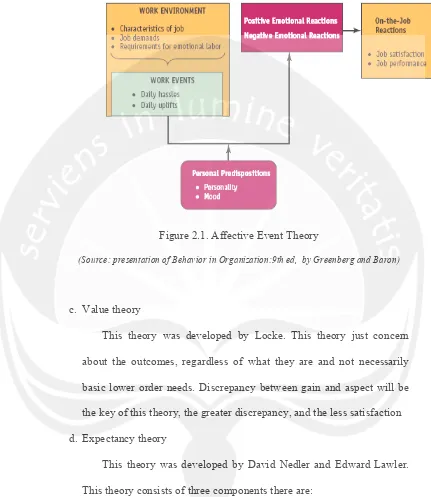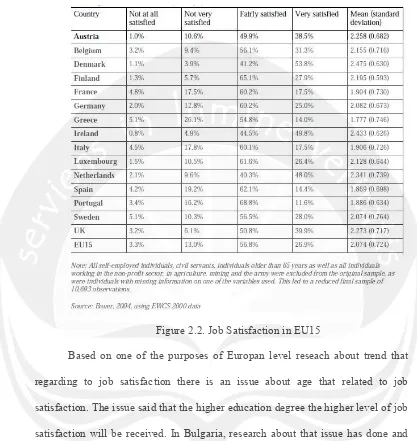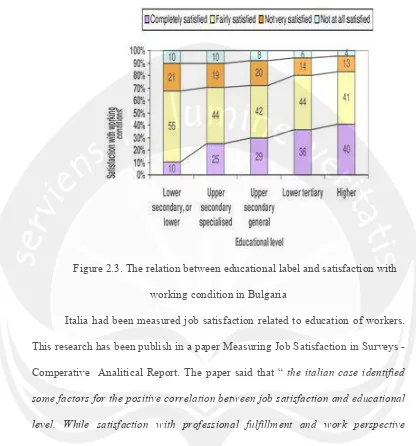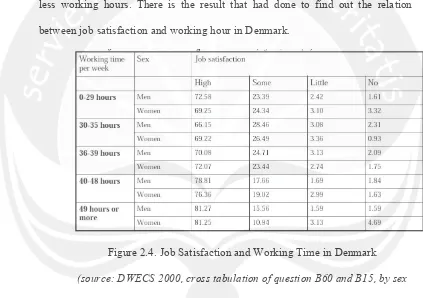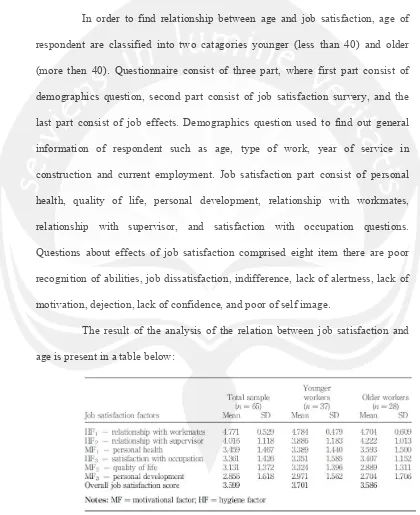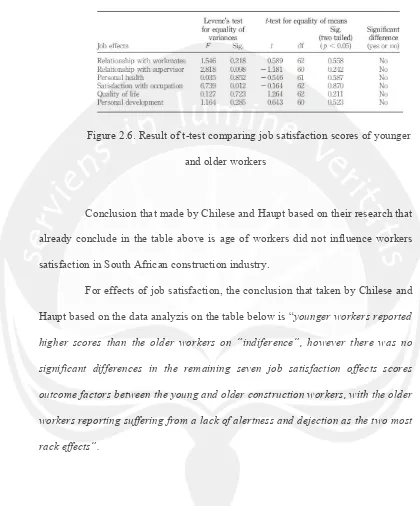4 CHAPTER II LITERATURE REVIEW
2.1. Organization and Organizational Behavior
A company is a kind of organization. There are several expert make a
definition to organization. Organization has its own definition depend on the
source. There are some definitions of organization:
1. Davis and Newstrom (1997)
“Organizations are the grand strategies created to bring order out
of chaos when people work together. Organizations create
predictable relationships among people, technology, jobs and
resources. Wherever people join in a common effort, organization
must be employed to get productive result”.
2. Greenberg and Baron (2008, p: 5)
“Organization is a structure social system consisting of groups
and individuals working together to meet some agreed upon
objectives”.
3. Robbins (2003, p: 2)
“Organization is a consciously coordinated social unit, composed
of two or more people, that functions on a relatively continuous
Each organization has its own way to act or subject their employees. The
action taken by organization to subject employees is different one to another. The
action depends on the basic concept of the organization and can be called as
organization behavior. Some experts has studied about organizational behavior
and they define organizational behavior as:
1. Davis and Newstrom (1997, p: 5)
“Organizational behavior is the study and application of
knowledge about how people act within organization”.
2. Greenberg and Baron (2008, p: 5)
“Organizational behavior is the field that seeks increase
knowledge of all aspect of behavior in organizational settings
trough the use of the scientific method”.
3. Robbins (2003, p:8)
“Organizational behavior is a field of study that investigates the
impact that individuals, groups and structure have on behavior
within organizations for the purpose of applying such knowledge
toward improving an organization’s effectiveness”.
Understanding organizational behavior is quite important, because
organizational behavior learns about human behavior in organization.
predict and to control some phenomena. Related to the behavior of organization
members by studying organization behavior a manager will be able to describe
what will human do in various situation, and try to understand why human behave
like that in that kind of situation. If the manager can understand and predict the
action of staffs of variety condition, hopefully manager can control the course of
actions in the work place.
2.2. Job Satisfaction
Job satisfaction has strong relation to organizational behavior. Different
kind of organizational behavior will act differently to its employees. Action that
taken will cause different result related to job satisfaction of each employee. There
are several definition for job satisfaction according to the experts there are:
1. Davis and Newstorm (1997, p: 256)
“Job satisfaction is a set of favorable or unfavorable feelings with
which employees view their work”.
2. Greenberg and Baron (2008, p: 221)
“Job satisfaction is individuals’ cognitive, affective and evaluative
reaction toward their jobs”.
3. According to Mangkunegara (2005)
“Job satisfaction is a favorable or unfavorable feeling of employee
job will be influence by salary, job opportunity, kind of job, structure
of organization in the company, and supervising. The feeling related
to their self will be influenced by age, healthy condition, capability
and education”
4. Robbins (2003, p: 25)
“Job satisfaction is an individual’s general attitude toward his or
her job. Job satisfaction represent an attitude tather than a
behaviour”.
5. Spector (1997)
“Job satisfaction is simply how people feel about their job and
different aspect of their jobs. it is the extent to which people like
(satisfaction) or dislike (dissatisfaction) their job”
According to pervious definition we can conclude that job satisfaction is
about the employee feeling about their job. Those feelings usually job related. The
feeling about their job sometimes influences their work performance. If the
employee gets stress about their job, the work result sometimes will not good as if
they feel happy about the job.
2.2.1. Theories of job satisfaction
a. Two factor theory
This theory was developed by Herzberg. Two factor theory has
divided into two parts there are hygiene factor and motivator. Hygiene
factor is factors when it has been fulfilling it will keep job satisfaction
and when it does not it will cause job dissatisfaction. Factors that cause
hygiene theory are working condition, pay, security, quality of
supervisor, relations with others. Those factors will not motivated the
employee to be better, those factor just need to keep job satisfaction.
Motivators’ factors associated with high level of job satisfaction. When
motivator has been fulfilling job satisfaction of someone will increase
to the higher level. Those factors are promotion opportunities,
opportunities for personal growth, recognition, responsibility,
achievement, nature of their job.
b. Affective event theory
Each way of organization act towards its employees may result in
different job satisfaction and different effect on each person. Affective
event theory said that employee reaction to their job even positive or
Figure 2.1. Affective Event Theory
(Source: presentation of Behavior in Organization:9th ed, by Greenberg and Baron)
c. Value theory
This theory was developed by Locke. This theory just concern
about the outcomes, regardless of what they are and not necessarily
basic lower order needs. Discrepancy between gain and aspect will be
the key of this theory, the greater discrepancy, and the less satisfaction
d. Expectancy theory
This theory was developed by David Nedler and Edward Lawler.
This theory consists of three components there are:
1. Expectancy of process and result: when doing something
people want to get something from their activity. This
2. Motivation: result of doing something can create
motivation. Motivation is different one to another depend
on the needs of that person.
3. Hope of effort and process: reach a goal is quite difficult.
Usually people will find an alternative way to reach goals.
e. Equity theory
Equity theory said that satisfaction cause by justice. This theory
consists of four factors there are person, input, outcome and comparison
person. Person is the people who did a problem. Input is something
valuable that give to the job such as education, experiences, etc.
Outcome is the rewards that give by company such as salary, status,
opportunity, etc. Comparison person is someone to be compared by that
person in input and outcomes. It can be the partner, someone outsider
that works in another company or it can be someone from the past.
If the result of the comparison is quite fair, so that person will feel
satisfied.
f. Hierarchy of needs theory
This theory was developed Abraham Maslow. According to this theory
every human has needs and the it is in hierarchy. The lower is
physiological need and the higher is self actualization need.
a. Physiological needs: need of physiological include hungry,
b. Safety needs: it is needs about safety and self protection from
emotion and physical aspect
c. Social need: it is needs about love, friendship, etc
d. Esteem need: divided into two part there are internal esteem
needs and external esteem needs. Internal esteem need such as
respect to our self, effort to finish problem, etc. Internal esteem
needs comes from people itself. External esteem needs such as
status, appreciation from another people, etc.
e. Self actualization needs: self actualization needs is the higher
level of human needs according to Maslow. Example of self
actualization needs is needs to reach dream.
This theory said that people will fulfill their basic human needs
first before fulfill the higher level of needs. Beside that everybody has
willingness to move forward to reach better life.
g. Theory X and Y
This theory was developed by Douglas McGregor. McGregor said
there is two kinds of human character there are negative called theory X
and positive character called theory Y. There are four assumption of
theory X:
a.Employees inherently dislike work and, whenever possible, will
attempt to avoid it
b.Since employee dislike work, they must be coerced, controlled, or
c.Employees will avoid responsibilities and seek formal direction
whenever possible
d.Most workers place security above all other factors associated with
work and will display little ambition
Theory Y is the opposite of theory X. Theory Y views about
positive human beings. There are four assumptions in theory Y:
a. Employees can view work as being as natural as rest or play
b. People will exercise self direction and self control if they are
committed to the objectives
c. The average person can learn to accept, even seek, responsibility
d. The ability to make innovative decisions is widely dispread
throughout the population and is not necessarily the sole province
of those in management position
h. ERG theory
This theory was developed by Clayton Alderfer from Yale
University. He do rework of Maslow’s theory. ERG is existence,
relatedness and growth. According to Alderfer human needs just in
three level of hierarchy:
a. Existence: it concern about basic human needs. Maslow
theory of physiological and safety needs are classified in
b. Relatedness: it is about maintaining relationship in social
life. Relatedness is align to social and esteem needs in
Maslow theory
c. Growth: it is about people feeling of satisfaction if people
make a contribution to others. It desire for personal
development.
i. McClelland theory of needs
This theory consists of three needs of human needs:
a. Need for achievement : the willingness to achieve something
based on the setting standard, to strive to success of finish
something
b. Need for power: the needs to make the circumstance both
human and nature to behave nicely so the goal can receive
c. Need for affiliation: the need of friendly to another people.
2.2.2. Factors caused job satisfaction
Several experts already suggest factors that influenced job satisfaction
there are:
1. Rose (2001): factors that influenced job satisfaction are individual
well being, working hours, work orientation, financial variables,
the employment contract, and market and job mobility.
2. Robbins (1998): there are four factors that determine job
supportive working condition and supportive colleagues. Based on
affective event theory, mood and emotion can be factors that
influence job satisfaction.
3. Greenberg and Baron (2008 p: 170): emotion is over reaction that
express feelings about event. Major emotions are anger, fear, joy,
love, sadness, and surprise. Greenberg and Baron (2008, p: 173)
mood is unfocused, relatively mild feeling that exists as
background to our daily experience.
4. Sofyandi and Garniwa (2007): type of work, supervisor, salary,
promotion opportunity, and relation between workers will be
factors that can influence job satisfaction. To measure job
satisfaction based on those factors, score that already check will be
given to factors and after that calculate to get total value.
5. Siagian (1986): every organization has hope, and hope of
organization can be shown in activities that happen in daily life
there are good circumstance work place, be active in a process of
decision making, especially when it is related to his/ her life,
diplomatically in discipline, reward of work, supervisor faithful to
the underlining, fairly payment, promotion opportunity and growth
in organization, understanding from supervisor to the underlining
private problem, guarantee to get good treatment and objective, and
2.2.3. Measuring job satisfaction
There are several ways to measure job satisfaction. According to Luthan
(1989) there are four ways to measure job satisfaction there are:
1. Rating scale: examples of rating scales are Minnesota Satisfaction
Questionnaire (MSQ), Job Descriptive index, and Porter Need
Satisfaction Questionnaire.
2. Critical incidents: it was made by Hezberg when create two factor
theory. Hezberg ask workers about factors that make them feel satisfy
and dissatisfy
3. Interview: doing interview can make us know about workers feeling
about their job honestly. Interview should be done face to face.
4. Action tendencies: it is about the willingness of someone to do or do
not want to do something.
According to Spector (1997) there are several legal ways to measure job
satisfaction. There are:
1. Job Satisfaction Survey (JSS): JJS originally use in human service
organization but it is applicable to all organization. It use nine facet
there are pay, promotion, supervisor, fringe benefit, contingent
rewards (performance based rewards), operating procedures ( required
rules and procedures), coworkers, nature of work, and communication.
Rating scale that use in JSS consist of six choices ranging from
2. Job Descriptive Index (JDI): JDI use five general factor that related to
job satisfaction there are nature of work, compensation and benefit,
attitude towards supervisors, relations with co-workers, and
opportunities for promotion. JDI can be applying for all type of
respondents. It was introduced in 1969 and created by Smith, Kendall
and Hulin.
3. Minnesota Satisfaction Questionnaire (MSQ): it has twenty points as
the knowledge and each point will consist of five questions. Those
points are ability utilization, achievement, activity, advancement,
authority, company, compensation, coworkers, creativity,
independence, moral values, recognition, responsibility, security,
social service, social status, supervisor (HR), supervisor (technical),
variety, and working condition. The advantages to use MSQ are:
a) Easy to use, easy to understand
b) Valid and reliable
c) Applicable to any organization
d) Applicable for manager, supervisor and employees.
4. Job Diagnostic Survey (JDS): it is statically mode, that measure about
employee feeling when they working in organization is happy or sad.
5. Job in General Scale (JIG): made by Ironson et al in 1989. The format
is same with JID and it has three choices answer there are agree, isn’t
sure, and disagrees. Questions that ask are about job in general rather
6. Michigan Organizational Assessment Questionnaire (MQAQ): it has
seven choices answers there are strongly disagree, disagree, slightly
disagree, neither agree nor disagree, slightly agree, agree and strongly
agree. When the answers of items are totaled the overall job
satisfaction score will be getting.
2.2.4. Research about job satisfaction
Many research have done in this world to measure job satisfaction. Those
research has done by several organization. Purposes of doing job satisfaction
measurement is different one to another, depend on the topic that taken. There are
several example of research about job satisfaction.
2.2.4.1. Europan foundation study
Measuring job satisfaction is already done in this world. Europan
Foundation had made reseach about job satisfaction and conclude in a paper with
title Measuring Job Satisfaction in Survey – Comperative Analytical Report. Data
are taken from fifteen contries there are Austria, Belgium, Denmark, Finland,
France, Germany, Greece, Ireland, Italy, Luxemburg, Netherlands, Spain,
Portugal, Sweden, and UK. One of the purposes of this research is to understand
how job satisfaction assessed to the country member and to outline the trends and
Figure 2.2. Job Satisfaction in EU15
Based on one of the purposes of Europan level reseach about trend that
regarding to job satisfaction there is an issue about age that related to job
satisfaction. The issue said that the higher education degree the higher level of job
satisfaction will be received. In Bulgaria, research about that issue has done and
Figure 2.3. The relation between educational label and satisfaction with
working condition in Bulgaria
Italia had been measured job satisfaction related to education of workers.
This research has been publish in a paper Measuring Job Satisfaction in Surveys -
Comperative Analitical Report. The paper said that “ the italian case identified
some factors for the positive correlation between job satisfaction and educational
level. While satisfaction with professional fulfillment and work perspective
increases as the educational level rises, the satisfaction with internal relation with
superiors and colleagues tends to decrease. In italy educational level strongly
increases as age decreases, due to the availability of better educationla
opportunities in recent times; consequently, young well educated workers are
Beside education another interesting trend related to job satisfaction is
working time. According to the paper there is unclear relationship between
working time and job satisfaction but according to research by national
corespondent there is positive relationship between job satisfaction with working
time flexibility and negative relationship between job satisfaction and overwork. It
says that people with long working hourl would be less satisfied than people with
less working hours. There is the result that had done to find out the relation
[image:17.612.94.517.265.563.2]between job satisfaction and working hour in Denmark.
Figure 2.4. Job Satisfaction and Working Time in Denmark
(source: DWECS 2000, cross tabulation of question B60 and B15, by sex
Denmark)
2.2.4.2. A study by Chileshe and Haupt
This study was conduct by Nicholas Chileshe from University of South
Australia, Adelaide, South Australia and Theodore C Haupt from Cape Peninsula
The effect of age on the job satisfaction on construction workers”. Research had
done around Western Cape province, use three hundred questionnaire that spread
randomly, but just sixty five questionnaire were returned.
In order to find relationship between age and job satisfaction, age of
respondent are classified into two catagories younger (less than 40) and older
(more then 40). Questionnaire consist of three part, where first part consist of
demographics question, second part consist of job satisfaction survery, and the
last part consist of job effects. Demographics question used to find out general
information of respondent such as age, type of work, year of service in
construction and current employment. Job satisfaction part consist of personal
health, quality of life, personal development, relationship with workmates,
relationship with supervisor, and satisfaction with occupation questions.
Questions about effects of job satisfaction comprised eight item there are poor
recognition of abilities, job dissatisfaction, indifference, lack of alertness, lack of
motivation, dejection, lack of confidence, and poor of self image.
The result of the analysis of the relation between job satisfaction and
[image:18.612.97.517.173.688.2]age is present in a table below:
Figure 2.6. Result of t-test comparing job satisfaction scores of younger
and older workers
Conclusion that made by Chilese and Haupt based on their research that
already conclude in the table above is age of workers did not influence workers
satisfaction in South African construction industry.
For effects of job satisfaction, the conclusion that taken by Chilese and
Haupt based on the data analyzis on the table below is “younger workers reported
higher scores than the older workers on “indiference”, however there was no
significant differences in the remaining seven job satisfaction offects scores
outcome factors between the young and older construction workers, with the older
workers reporting suffering from a lack of alertness and dejection as the two most
Figure 2.7. Result of Rank Comparison of Job Satisfaction Effects
